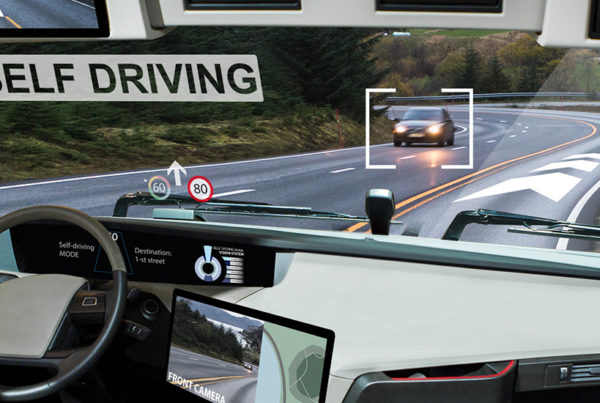Big Data has made fleet management more effective than ever. Learn how connected processes can increase your drivers, trucks and trailers’ productivity.
Big Data is revolutionising fleet management, providing easier access to large volumes of data on the performance of trucks, trailers and drivers, enabling fleet managers to plan, react and make key decisions in a more efficient manner. As the technology powering Big Data collection and analysis has got faster and more connected, the value of information to fleet managers has greatly increased, making it easier to ensure fleets are leaner, greener and safer.
But how can you capitalise on all this data to improve your fleet’s productivity? The key is to know what data is most impactful and leveraging the tools and solutions at your disposal to harness it effectively. Armed with the right data, you can transform your fleet’s operations to identify and predict potential issues. This can help you create effective strategies that will lead to the right decisions.
Big Data provides information from your drivers, trucks and trailers to help you identify and even predict issues to improve fleet performance.
Transforming fleet data into useful insights
Knowing which data to prioritise and harvesting that data from your trucks and trailers is one thing, but analysing it and using it effectively is another entirely. As a fleet manager, there are important insights you can gather from all the Big Data available to improve performance in different areas.
Fleet fuel efficiency
One of the best uses of Big Data is to garner a better overview of your fleet’s fuel-efficiency performance. On a driver-by-driver and vehicle-by-vehicle basis, you can analyse what you’re spending on fuel against distance covered, allowing you to see:
- Where, when and how often drivers refuel
- If there are certain refueling patterns observable
- Whether they’re using the most cost-effective places to fill up
- If there is a sudden anomaly in fuel consumption
- Which trucks aren’t performing at their optimal level
These statistics can highlight efficiency trends on a daily, weekly, monthly and yearly basis, letting you pinpoint improvements and tackle problems in real time, as well as develop more effective refueling policies.

Driver performance
A fleet is more than just your trucks – it’s also the people who drive them. With Big Data, you can get a firm grasp on how your drivers are performing, both collectively and individually.
You can use this to set targets and work out which drivers require training. As driving style impacts fuel usage, delivery times, safety and overall fleet efficiency, you can identify which of your drivers are driving economically , as well as spotting those that require extra monitoring or could benefit from training courses. Comparing good and bad drivers can create positive competition among your drivers to encourage further improvement.
A full data set allows you to take into consideration external factors that can affect your drivers, such as traffic, road closures, certain routes allocated to specific drivers and inclement weather.
Costs and expenses
Aside from fuel, you can also make fleet cost savings by looking at other expenses thanks to Big Data. Repairs, parts, tolls, inefficient driving routes, damages, accidents and insurance costs – all of these can impact on the bottom line.
You can see where your expenses are exceptionally high, as well as set key benchmarks and targets for cost reductions. The downtime and costs of repairs can be reduced with Big Data insights into truck and trailer performances, so that you can plan maintenance and take vehicles off the road before any minor issues become major problems.
This can also help you decide when it’s time to invest in new vehicles or if you can keep older ones on the road for longer. For smaller fleets especially, such data can inform any decisions around leasing or renting rather than owning vehicles.
Managing your fleet using Big Data is a relatively simple process, if you are equipped with the right tools.

How does Big Data fleet management work?
Managing your fleet using Big Data is a relatively simple process, if you are equipped with the right tools. Integrated software platforms connect with a vehicle’s telematics box or on-board computer to collect and transmit all the essential information.
Rather than being presented with mountains of data, the software sorts and tabulates the information in a variety of ways that make it easy to digest. It is presented in a user-friendly format, such as graphs and charts, to enable you to easily view fleet and driver performance information, prepare reports and make adjustments accordingly. You can sort and filter the data, so you analyse only that which is relevant to your needs. The software itself can be customised and personalised to the needs of the fleet manager.



